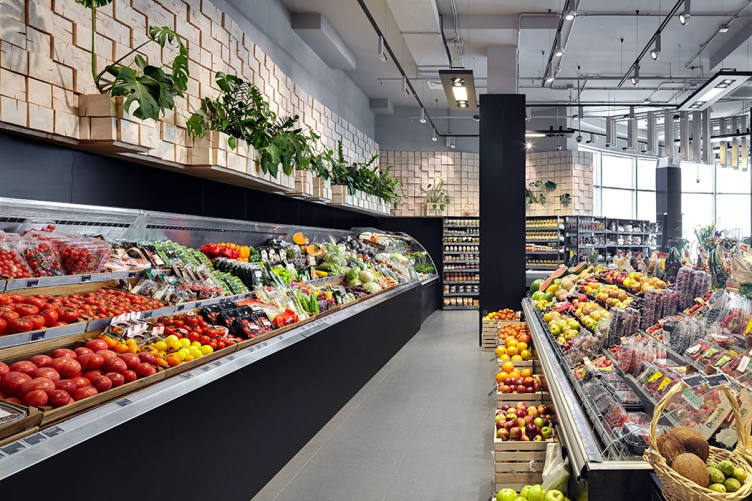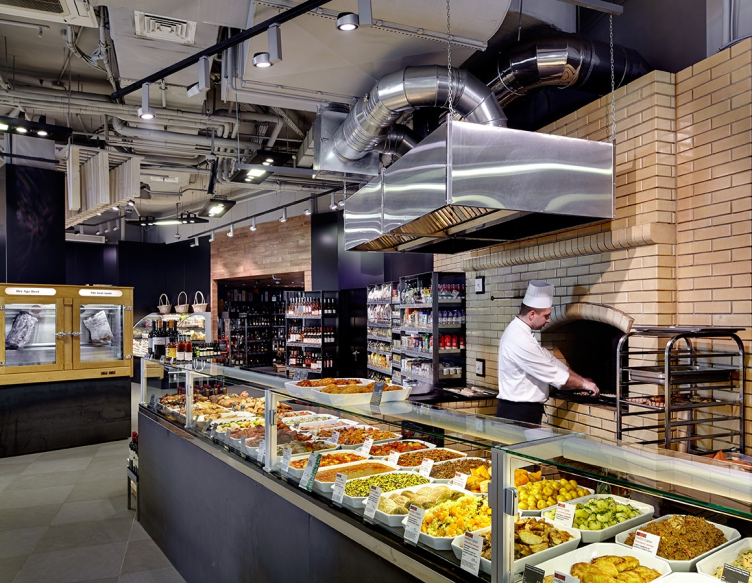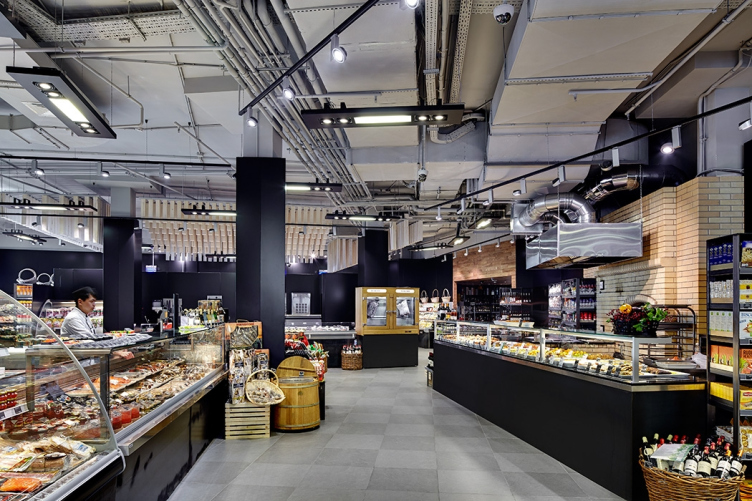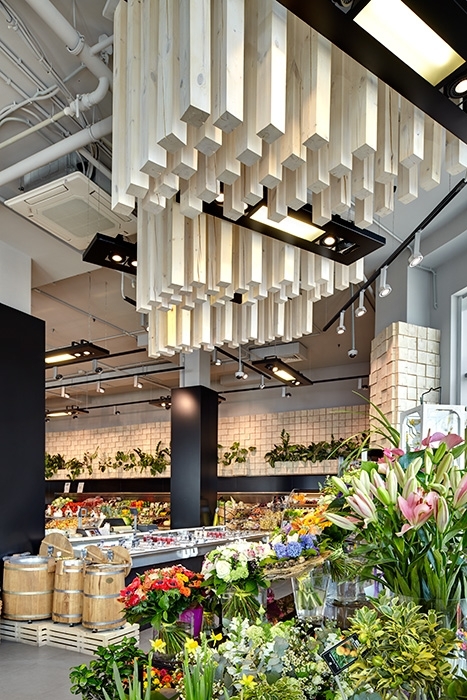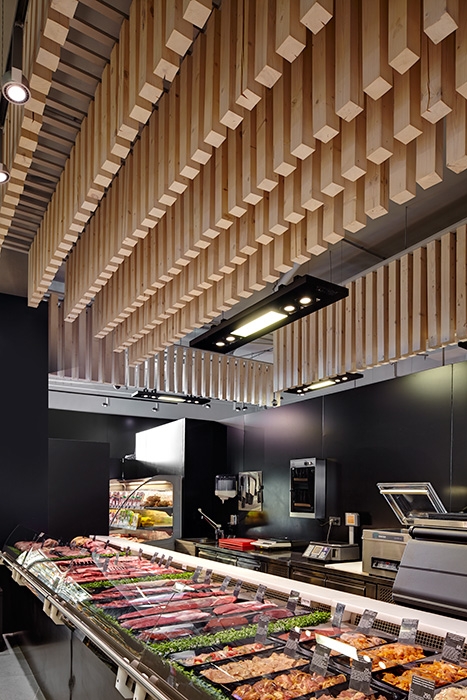
"Globus Gourmet" grocery store © UNK project
Looking a lot like a stylish kitchen of an expensive restaurant, this interior design was developed by UNK Project that already worked with this customer before. With all the diversity of Julia Tryaskina's ideas that form the basis of the design projects of each next "Globus Gourmet" store, one can clearly see in them a few common features that make each food boutique or store of this chain easily recognizable and completely unique at the same time. What they have in common is the technologically rationally organized space where one's entire attention is inevitably focused on the food products; the careful selection of up-to-date custom-designed selling equipment, the well thought-out light, and the central position of the already-mentioned "restaurant" kitchen, upon which the entire design idea is based. As for the artistic techniques, they consist in the austere laconism of rectangular shapes and the indispensable presence of the radical black color on the walls that, according to the customer, helps show the food assortment to the best advantage. All the rest is virtuoso decor and quite appropriate, though ironic, pieces of "theater setup".
For example, in the town of Zhukovka, "Globus Gourmet" sells its food in the interiors of a hunting-box that might belong to a French aristocrat - a cabin with plasterwork, pompous chandeliers, and the inevitable hunting trophies on the walls - already nothing like the "big city" style, not yet a "manor". On Moscow's Pokrovka Street, where "Globus Gourmet" occupies the first floor of a XIX-century tenement house, behind the "back from those days" showcases, one can see the decorations of the mansion. On the Yakimanka Street, the place where it all began - the "Globus Gourmet" chain and the cooperation with UNK Project and Julia - this "all" is packed into a nutshell of a city swinger's apartment: there is a lot of white, a lot of black, silver-glistening metal in the "hi-tech" style and the black-and-white botanics of the pictures on the walls.
As for the new store on the New Riga highway, it naturally explores the topic of the "house in the country": the wooden surfaces and the fireplace live here quite peacefully with the contemporary materials and innovative technologies. Most of the working surfaces and decorative elements are executed from wood of various kinds or materials that simulate it. Above the counters, there is a broad band of "wood-stack", with the house plants growing through the walls and referring us to the verdure of the "dacha" plot - everybody to the garden, please!

"Globus Gourmet" grocery store © UNK project
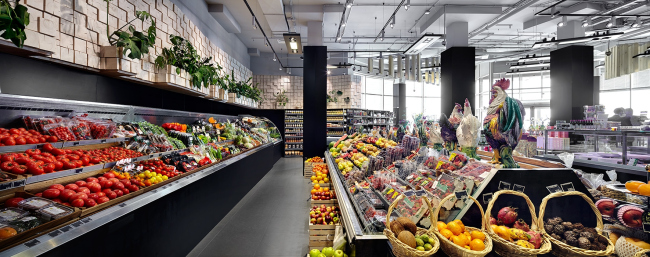
"Globus Gourmet" grocery store © UNK project
It's only the barbecue spot that this place misses.
This, however, has also been taken care of: opposite the textured "wood-stack" wall, the architects inserted into the smooth brickwork surface a real grill fireplace with real fire. This is the place where the Uzbek pilaf is cooked and the shashlik is fried. According to the authors, organizing such an undertaking directly in the salesroom was quite a tall order. First of all, they had to tame the open fire in a confined space, and, second of all, deal with the issue of the odor of food being cooked... The result is just great: there is neither grime nor the persistent odor of meat being fried, and each department can safely entice the customers with its own unique aromas. However, these aromas are not the ultimate guiding tool in this case.

"Globus Gourmet" grocery store © UNK project

"Globus Gourmet" grocery store © UNK project
The carefully selected combination wood, galvanized panels, and ceramic granite helped the architects to clearly mark the different zones of the store. The contemporary interpretation of the Milan ceramic tile looking like a water surface touched with ripples... is the fish and seafood department. The crispy pastry is stacked on the tall wooden counters and, just as at some old-fashioned bakery, lies in the large wicker baskets. Instead the fancy counters of expensive materials, we see here the showcases of bricks and dark metal that display all sorts of meet. And, as for the fresh greens, they look to the best advantage against the wooden background.
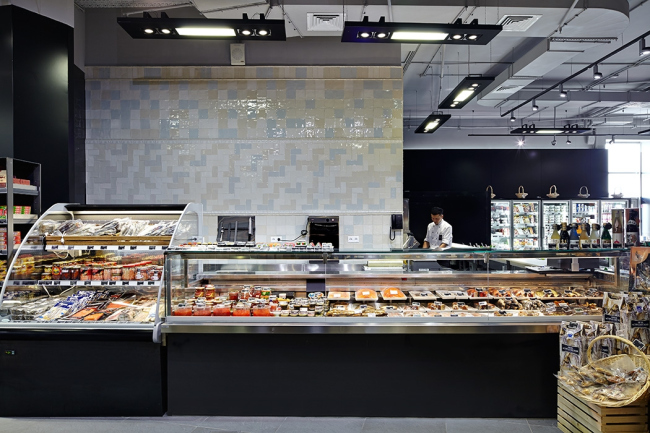
"Globus Gourmet" grocery store © UNK project
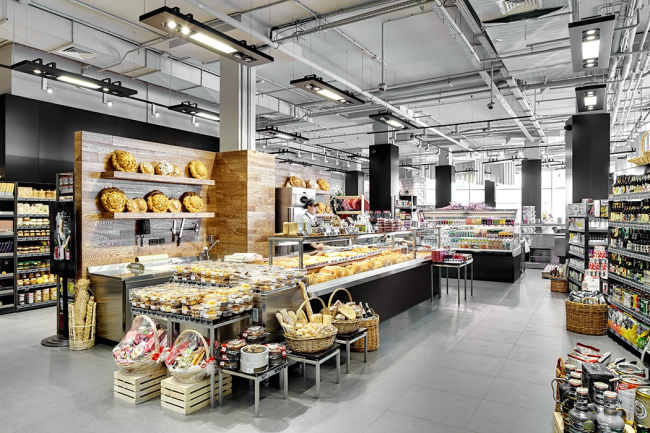
"Globus Gourmet" grocery store © UNK project
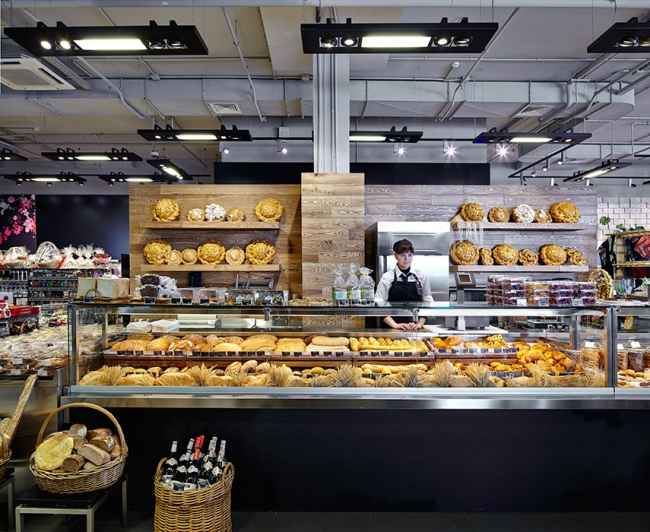
"Globus Gourmet" grocery store © UNK project

"Globus Gourmet" grocery store © UNK project
Besides the traditional techniques of organizing the space, when the vegetable department attracts one's attention with a bright backlight and the play of reflections in the numerous mirrors, as a small but a cute whim, above the trays with the nuts and dried fruit, there are decorative figures of domestic birds: roosters with multicolored gorgeous tails and mottled laying hens.
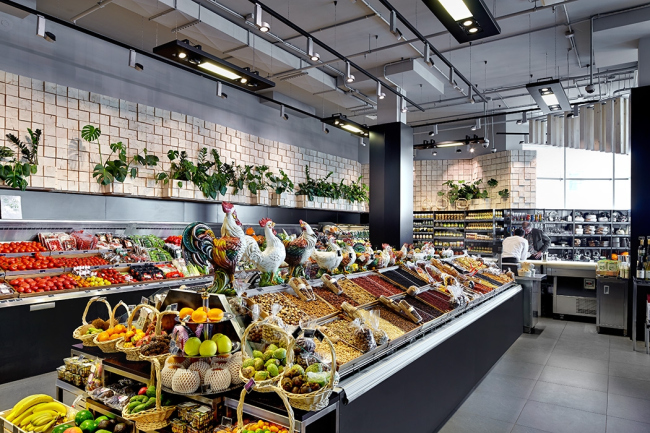
"Globus Gourmet" grocery store © UNK project
The traditional black wall panels, so popular in European food stores, but still not too familiar to the eye of the Russian customer, gather together the variety of the textures, surfaces and decorations.
The theme of the wood-stack is picked up by the cascades of wooden blocks hanging down from the ceiling. The ceiling light, the numerous ventilation ducts, and the electrical layouts are slightly "draped" by these wooden stalactites. Alternating with the rectangular dark lights, and thus subtly backlit from inside, these blocks become almost the main accent of interior - that is, after the food products on sale, for which the correctly selected light is 90% of successful sales. The system of LED light used here is an innovative solution for a Russian food store. The LED's selected by the architects give a very natural kind of light, and besides, because of their ability to stay cold - prolong the life of vegetables and fruits, at the same time giving them an even more appetizing look.
But then again, thanks to the right light, unconventional decorative elements, and the designers' insights, not only the vegetables and fruit, but the whole interior looks very enticing and appetizing - just "gourmet"...
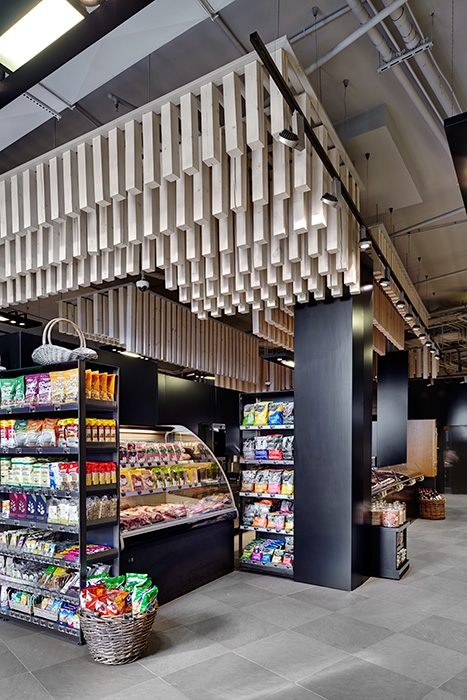
"Globus Gourmet" grocery store © UNK project

"Globus Gourmet" grocery store © UNK project

"Globus Gourmet" grocery store © UNK project





